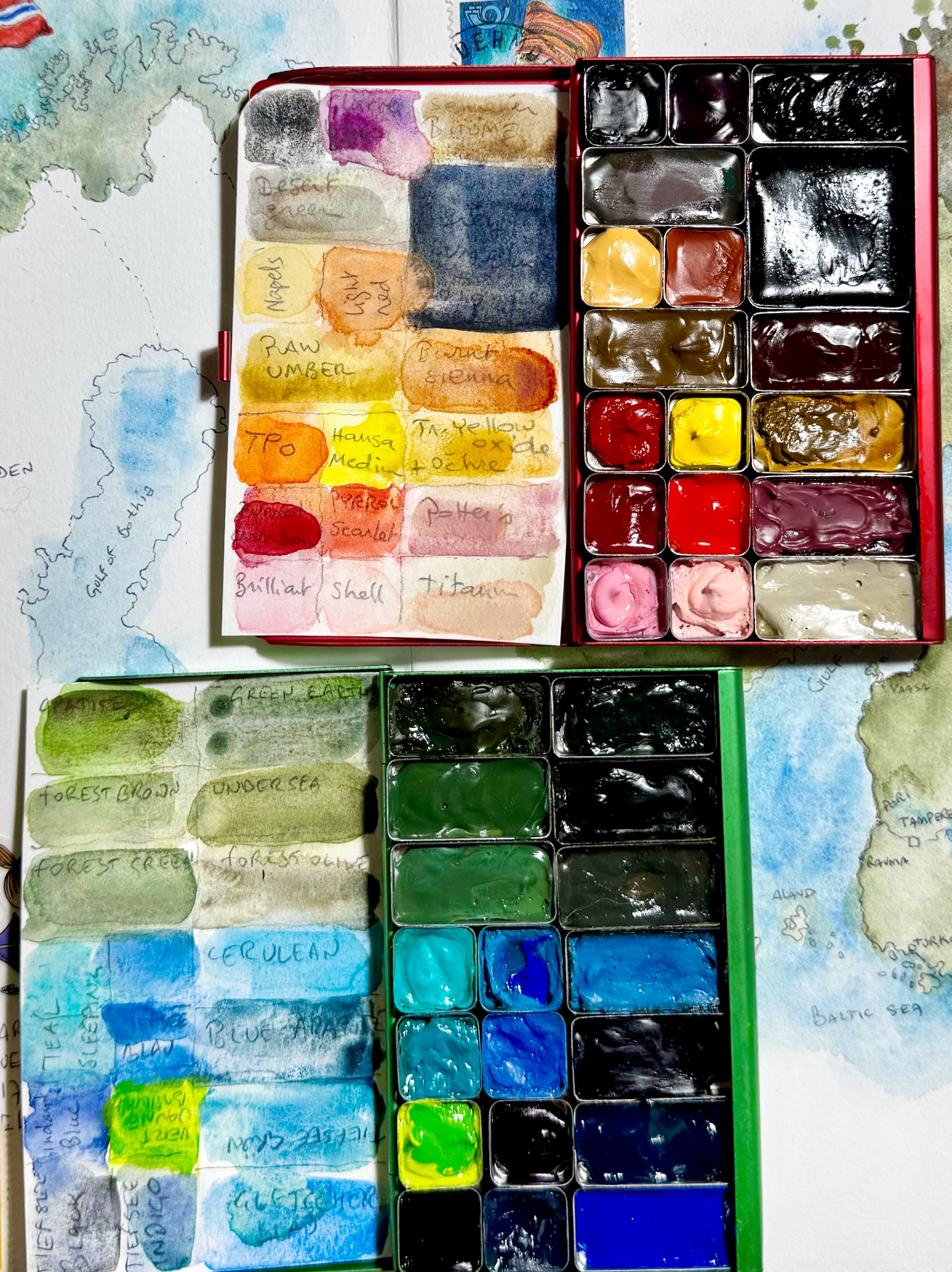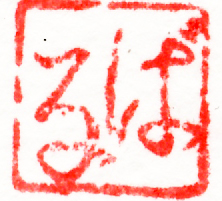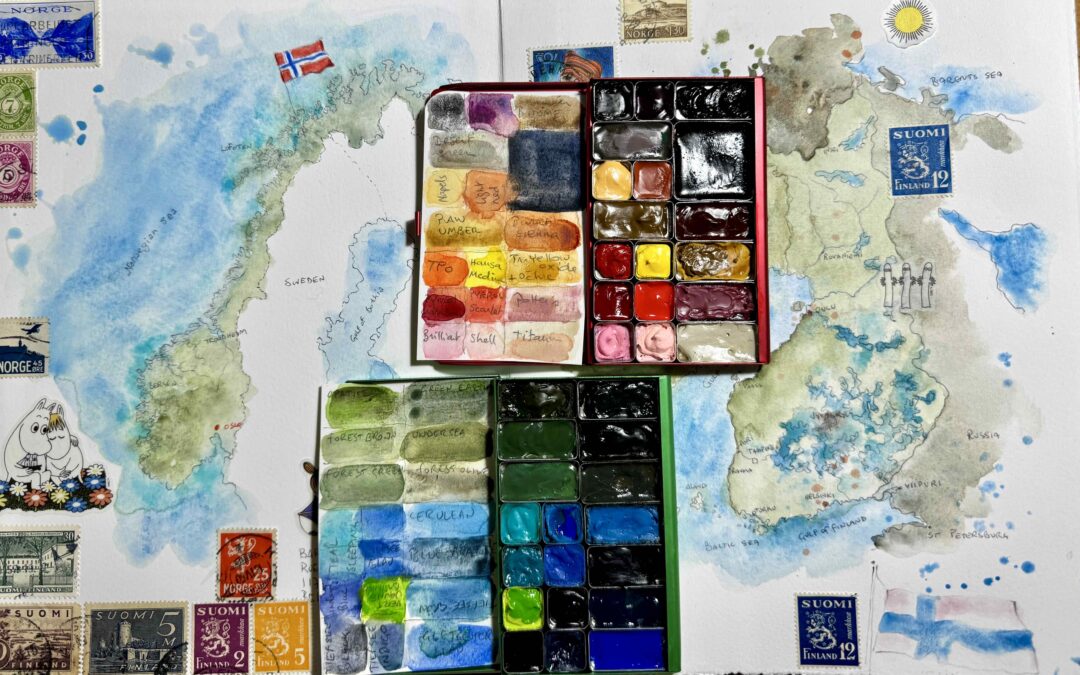
The Art of Being Present: How Urban Sketching Transforms Your Holiday Experience
I carry my work everywhere with me, even on holiday. No matter how beautiful the destination – whether I was exploring a bustling European city, hiking in Japan or discovering hidden corners of my own hometown during a staycation – I have difficulty to shake the gnawing feeling that I shouldn’t be enjoying myself. There is always that unfinished project, that email I should have sent, that task I hadn’t completed to my own impossible standards. Guilt creeps in whenever I tried to relax, whispering that I didn’t deserve this break, that I was being irresponsible by stepping away from my responsibilities. I’m always hearing that voice in my head: “you’ll be able to play when your work is finished”. But the work is never finished!!
It wasn’t until I discovered urban sketching that everything changed. This simple practice – taking your art out into the world to capture your environment directly, authentically, and in the moment – offered something I desperately needed but didn’t know how to find: the gift of true presence.
The Holiday Paradox
How often have we returned from holidays feeling like we need another vacation? We rush from sight to sight, snapping photos for social media, checking off must-see attractions from our lists. We’re physically present but mentally scattered, still carrying the weight of daily pressures and the expectations of others. We’re everywhere except where we actually are.
The irony is that the very thing we seek in holidays – peace, joy, connection – requires us to slow down and truly inhabit the present moment. This is where urban sketching becomes not just an artistic practice, but a form of moving meditation.
The Curious Eye
When you sit down with a sketchbook and begin to draw what’s in front of you, something magical happens. Your attention shifts from inward anxiety to outward curiosity. You’re no longer thinking about tomorrow’s meetings or yesterday’s mistakes. Instead, you’re completely absorbed in the way light falls across a building facade, the gesture of a person walking by, or the intricate patterns in tree bark.
This shift is profound. You begin to notice details that would otherwise blur past – the particular blue of a shadow, the rhythm of architectural elements, the way people move through a space. You’re not just looking; you’re truly seeing. And in that seeing, you discover beauty in places you might have overlooked.
Urban Sketching: Your Portable Meditation
You don’t need pristine landscapes or exotic destinations to practice urban sketching. This practice – capturing the everyday life of cities and towns – can be done anywhere. A local café, a park bench, even your own backyard can become a source of wonder when viewed through the lens of artistic attention.
The beauty of this practice lies in its simplicity. All you need is a small sketchbook, a pen or pencil, and the willingness to sit still for a moment. No expensive equipment, no technical expertise required – just curiosity and presence.
The Art of Slow Travel
Urban sketching naturally slows you down. While others might rush through a location, you’re invited to linger, to really get to know a place. You might spend an hour drawing a single street corner and, in doing so, witness the entire rhythm of local life unfold before you. Children walking to school, shopkeepers opening their doors, the changing quality of light as morning turns to afternoon.
This slower pace doesn’t mean you see less – quite the opposite. You experience more depth, more connection, more authentic moments. Your sketchbook becomes a visual diary, not just of places, but of experiences and emotions.
Breaking Free from Perfection
Perhaps most liberating of all, urban sketching teaches us to let go of perfection. When you’re drawing in the real world, conditions are constantly changing. Light shifts, people move, weather happens. You learn to work with imperfection, to capture the essence rather than every detail.
This acceptance of imperfection is profoundly healing, especially for those of us who carry the weight of others’ expectations. Your sketches don’t need to be gallery-worthy; they just need to be honest records of your experience. In this honesty, you find freedom.
Coming Home to Yourself
The real magic of urban sketching on holiday isn’t just in the beautiful drawings you create – though those are wonderful souvenirs. It’s in the way this practice brings you home to yourself. When you’re fully present with your surroundings, when you’re engaged in the simple act of observing and creating, you remember who you are beneath all the roles and responsibilities.
You rediscover your capacity for wonder, for quiet joy, for being rather than doing. And these discoveries don’t stay behind when the holiday ends – they travel home with you, enriching your daily life long after you’ve returned.
So next time you’re planning a getaway, whether to distant shores or just to a different neighborhood, pack a sketchbook. Give yourself permission to slow down, to be present, to see with fresh eyes. Let the act of drawing become your gateway to truly experiencing the world around you.
After all, the best holiday gift you can give yourself isn’t a perfect itinerary or the most Instagrammable spots – it’s the simple, profound pleasure of being fully where you are.
And when you come home and look at your sketchbook, all the sounds, smells, tastes and souvenirs come back to you, more intense than whan you only take pictures.
Here I share my sketching materials I’m taking to Norway and a lovely video.
In this charming tutorial from the Museum of Modern Art (MoMA) in New York City, the US artist Bix Archer embarks on a plein-air excursion in the museum’s sculpture garden, which provides a dynamic setting rich with greenery, angles and reflections, as well as the movement of people, sunlight and corresponding shadows throughout the day. Archer discusses the materials and techniques that tend to work best for outdoor drawing sessions, and places the practice in the context of masters including Hilma af Klint and Paul Cézanne. Throughout, she also frames plein-air drawing as a deeply embodied activity that prompts the artist to respond to changing sights, sounds and emotions – which, in Archer’s session, include a surprise marriage proposal.


Thank you for your lovely email and the excellent video. Loved it.
I was sketching during a festa here in Portugal. The food truck owner saw me and asked me to sketch his truck too. Fun!!
Wonderful Suzanne!
Do you post your sketches somewhere to see? Can I see them on Instagram? I’m curious to see Portugal through your eyes!